(This article by Roberta Naas was first published on Forbes.com.)
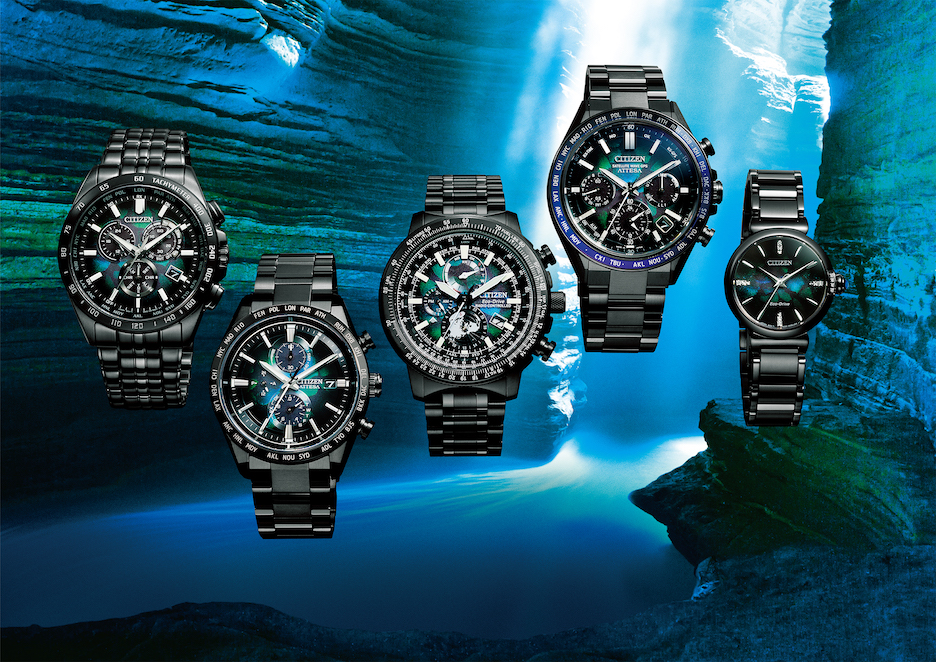
Citizen Layers of Time Anniversary watches
Just recently in New York City, Japanese brand Citizen Watch Company celebrated the 100th anniversary of its first-ever watch – a pocket watch created in 1924. That watch was not only a mechanical piece of art and technology significant for its day, but also served as the impetus for the newly released 100-year celebration pocket watch that was on display at a carefully curated exhibition, The Essence of Time, event just blocks from New York’s iconic Washington Square Park.
In addition to releasing the 100-piece limited edition commemorative pocket watch, Citizen unveiled a series of anniversary wristwatches, and opened doors to an exclusive traveling exhibit of 100 exceptional historic timepieces from its archives – each grouped into specific categories that define all of the brand’s areas of expertise.
Citizen Layers of Time Anniversary Watches
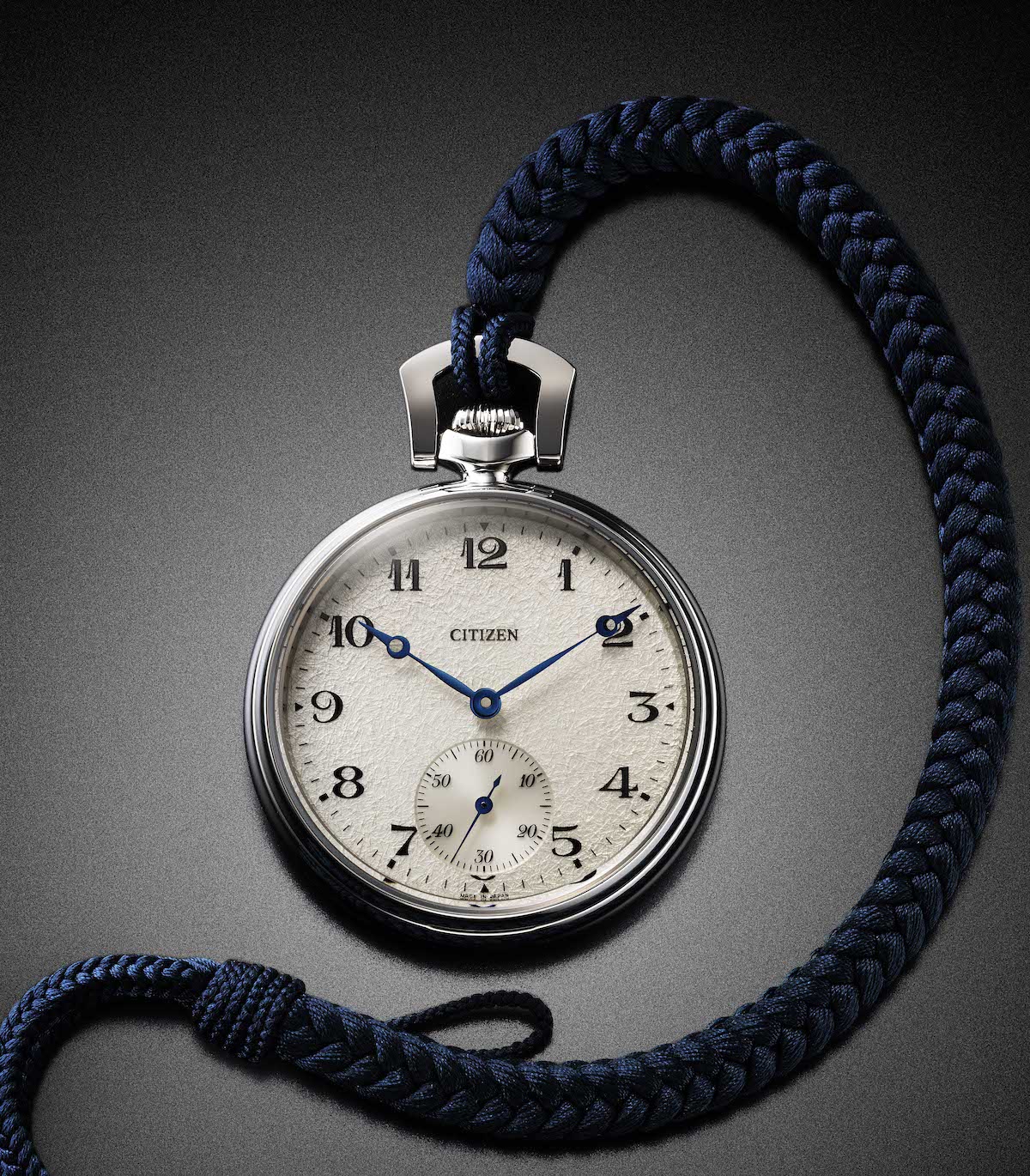
Citizen Layers of Time Anniversary Pocket watch
While the past is a great influence on the present and future, Citizen is always forward thinking. As such, the brand unveils not only the aforementioned limited edition pocket watch, but also five new Layers of Time Limited Edition Anniversary wristwatches.
The new pocket watch is a hand-wound timepiece that pays homage to the original, but with a host of modern developments. For instance, it is crafted in a light-weight titanium alloy and boasts a free-sprung balance wheel that offers accuracy of -3 to +5 seconds a day. The bridges are decorated with the Cotes de Geneve waves and the dial is electroformed to create a stunning effect in linen white. The movement can be viewed via a sapphire case back and the watch is sold with a Japanese silk braided cord dyed in a custom-created indigo charcoal color. Just 100 pieces are being offered worldwide at a retail price of $7,500.
The other five limited-edition anniversary watches, dubbed the Layers of Time collection, feature “Structural Color” dials. These rich gradient blue/black dials are inspired by the layers of rock and minerals in the earth. The concept is to draw a parallel between Citizen’s 100 years of watchmaking growth and Earth’s own growth powers. The dials are created using 100 percent recycled polycarbonate printed with structural colored ink that was developed by Fuji Film Corporation. The process endows the watch with a glitter and sense of depth.
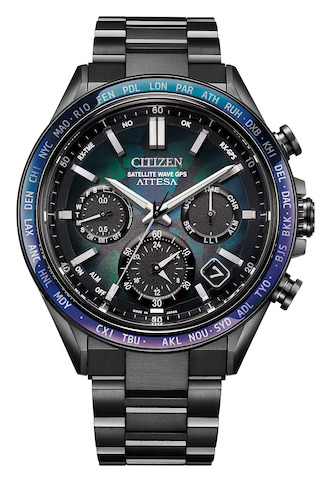
Citizen Layers of Time Anniversary watches each features a structural blue-hued dial.
Each of the new watches is equipped with Citizen’s proprietary Eco-Drive technology. Essentially, Eco-Drive is a light-powered system that makes the watch one of the most sustainable on the market. (Pundits might argue it is the most sustainable.) It is only because of the Eco-Drive technology that the dials are possible, as they allow the necessary light through to power the watches.
Citizen Attessa models being offered include a 44.5mm Eco-Drive Satellite Wave GPS F950 watch (1,900 being made at $2,295), an Eco-Drive Radio Controlled watch (2,100 worldwide selling for $1,495). Additionally, there is a ProMaster Eco-Drive Radio-Controlled Geo Trekker ($895) and a 43mm Radio-Controlled PCAT with perpetual calendar and more. The smallest watch isa 29.5mm Citizen Mae Eco-Drive watch in stainless steel with three-hands ($650).
Citizen Essence of Time Commemorative Book
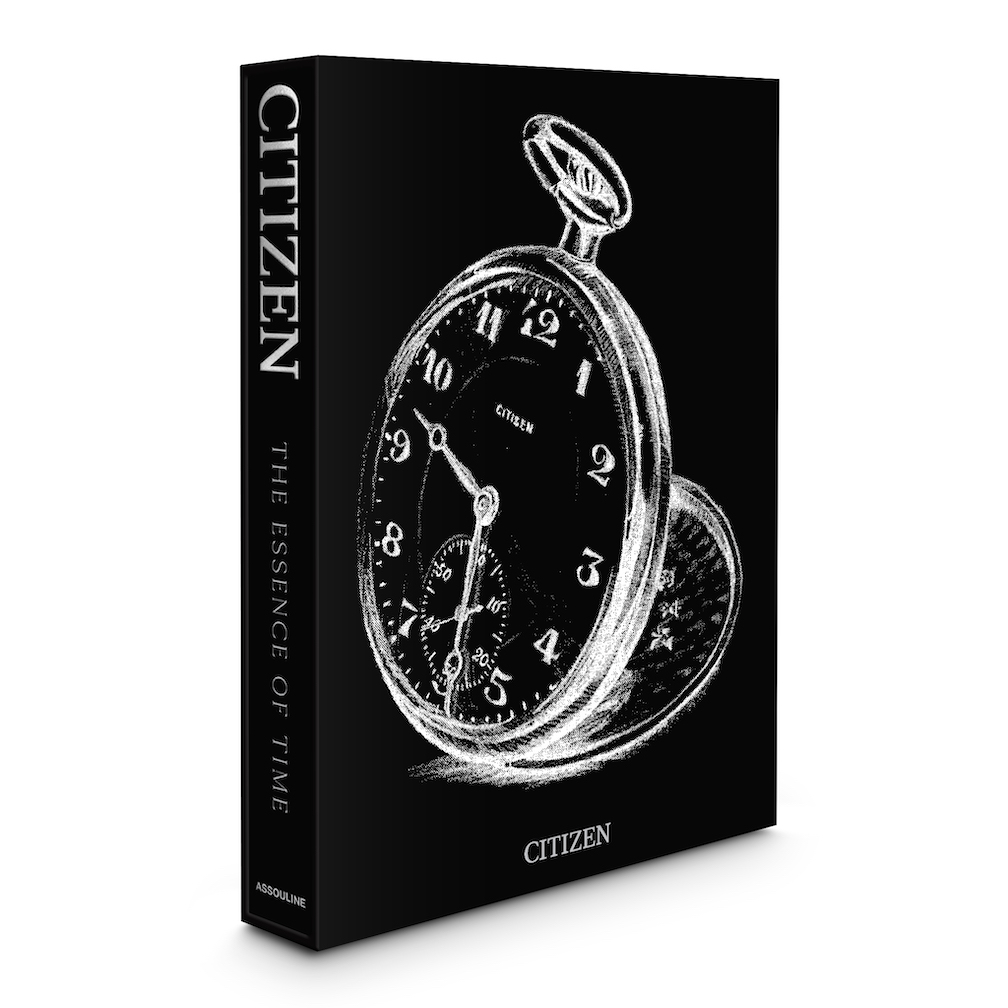
Citizen Essence of Time book
Naturally, an anniversary of this scope would not be complete without the launch of a commemorative book. In this instance, Citizen unveils Citizen: The Essence of Time coffee table book, published by Assouline and written by the global editorial director of watches for WatchBox.com, Jack Forster.
The hard-cover book boasts 250 images and illustrations and is a grand compilation of the 100 watches from the exhibit, along with other significant milestones in the legacy of Citizen Watch Company. It offers insight into the brand’s expression of the beauty of the passage of time. It retails for $195.
Citizen Essence of Time Exhibit of 100 years of Watchmaking Innovation
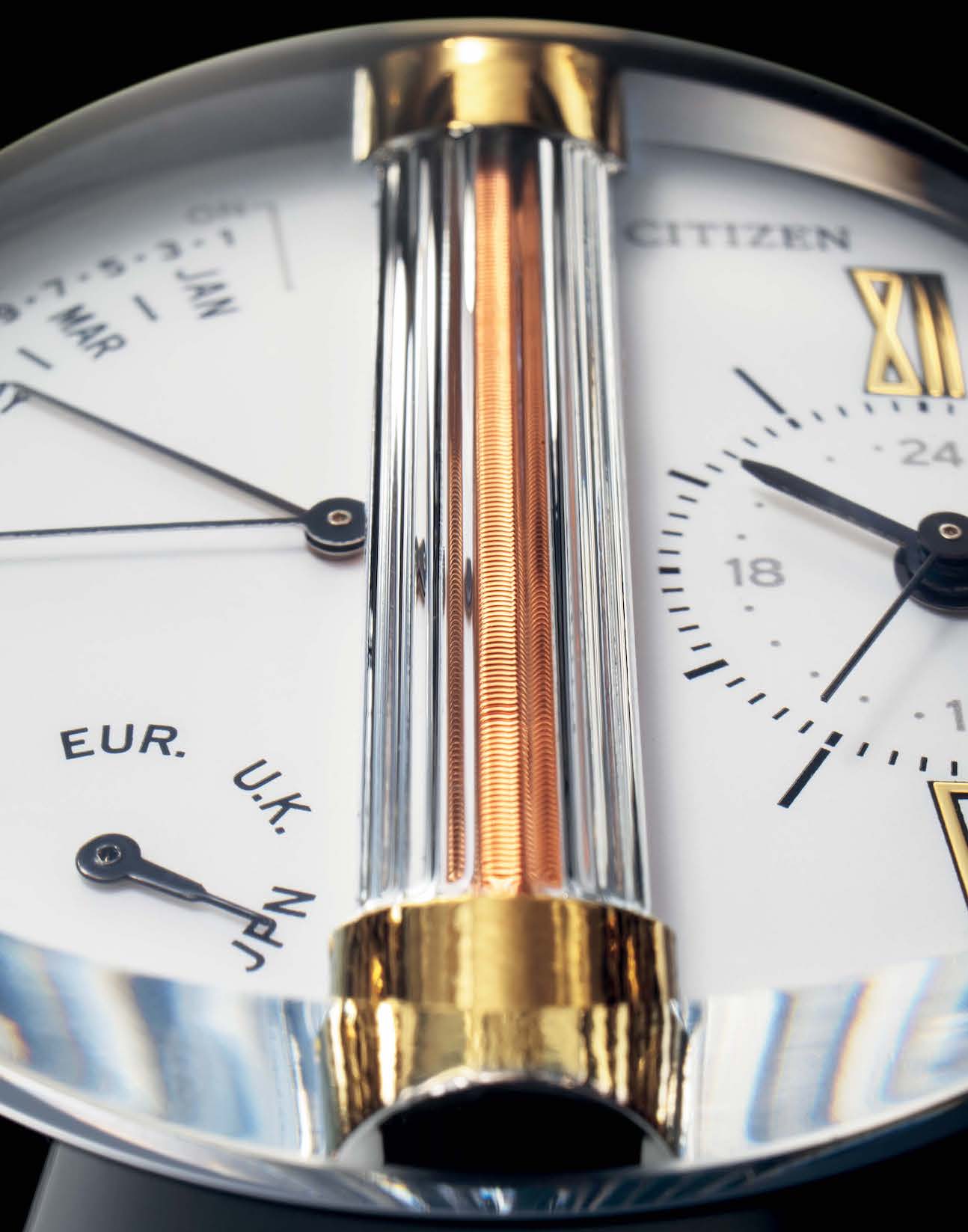
One of the watches on display at the exhibit in New York.
As mentioned, Citizen also showcased 100 years of its watchmaking innovation during the event. The Essence of Time exhibit that was a highlight that night, is unique in several ways – each recalling the individualistic and pioneering approach of the brand to watchmaking. To begin with, most exhibits honoring 100 years are created using timepieces from different eras and organized chronologically. Citizen eschewed that chronological concept and instead opted to organize its watches into 12 categories based on factors such as a fusion of analog and digital, Eco-Drive power, sophisticated technology, stellar design and more – leading to a truly enjoyable revelation about the brand’s extraordinary and far-reaching engineering and technology.
Originally founded in 1918, Citizen has consistently pushed the boundaries of precision and technology and continues to do so today. As such, selecting the perfect timepieces to showcase the history of watchmaking since that initial watch unveiled in 1924 and given the name Citizen, was no easy feat. In fact, the brand executives spent hundreds of hours poring through archives of more than 6,000 watches to pare it down to those that truly captured the essence of Citizen’s expressions of time both inside and out.
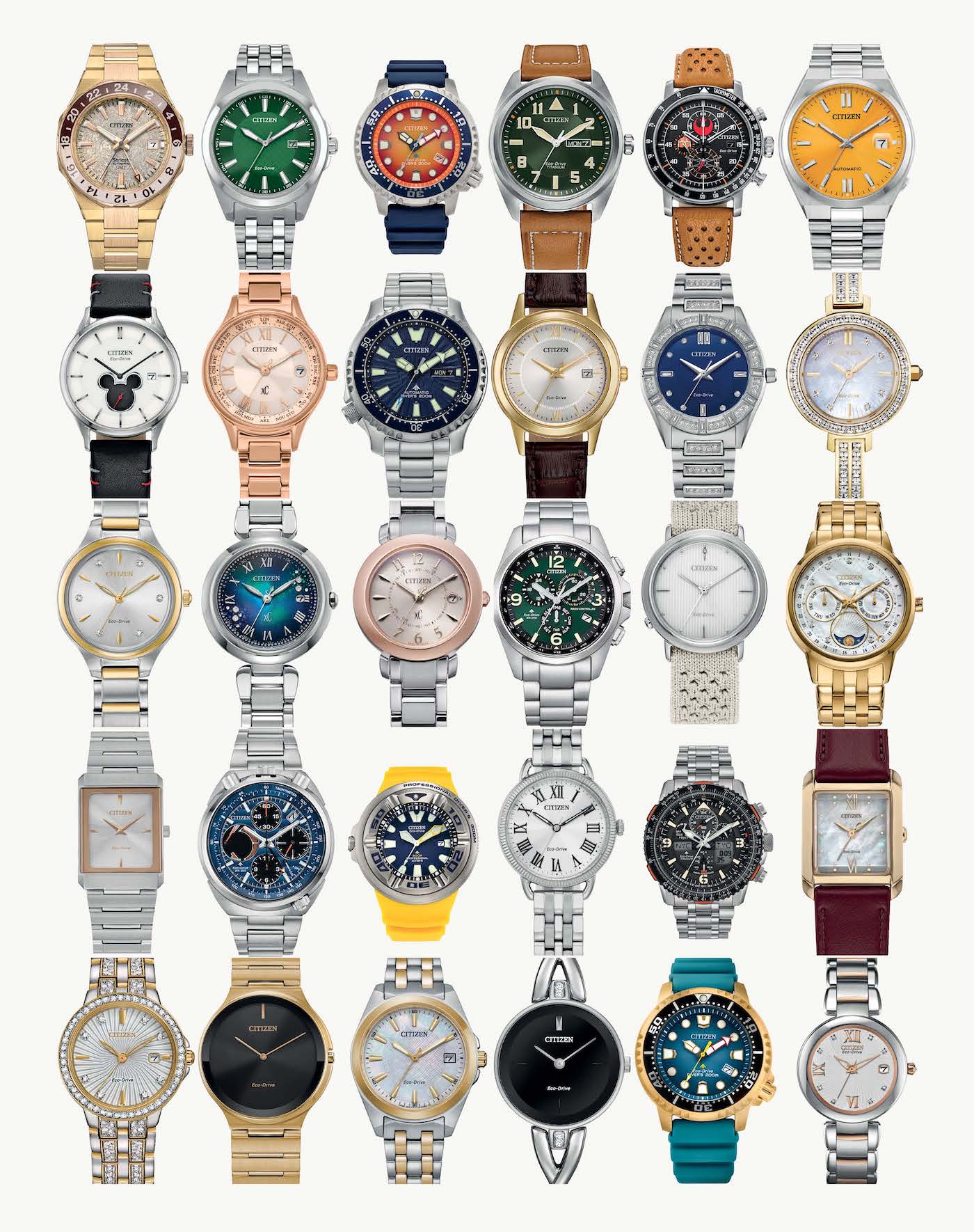
Citizen Essence of Time book, photo courtesy of Assouline.
Each watch selected had to express something unique about the brand and needed to possess elements that are relevant today. Highlights of the exhibit – grouped in 12 Citizen Design DNA categories – include the brand’s Satellite Wave and Eco-Drive watches from the mid 2010’s (Sophisticated Technology category), the 1984 Voice Memo watch and 1994 ProMaster Navihawk (Fusion of Analog and Digital), and so much more.
Many of my favorites came in the Ground-Breaking and Record-Setting category, with watches such as the 1984 Soundwich watch with integrated AM/Fm radio, and the first Radio-Controlled watch (1993). From braille watches to magnified women’s jewelry watches, dive watches and more, this exhibit did not disappoint.
Unfortunately – and this is another area in which the brand differs from most – the exhibit, which began in Tokyo, came to New York and then is traveling to other cities around the world, is not open to the public at large. Why? Because the curated historical watches on display are not under glass, nor under lock and key. In fact, watch aficionados invited to witness the event are treated to uninhibited views of some magnificent trailblazing timepieces.
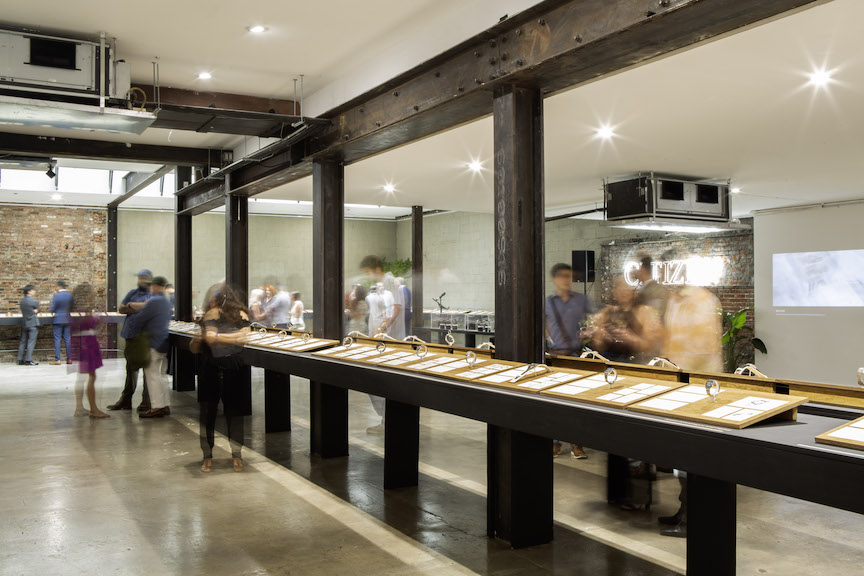
Citizen 100th anniversary of watchmaking.





